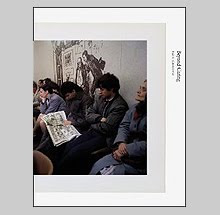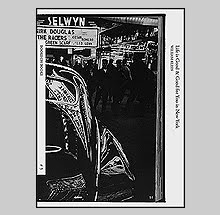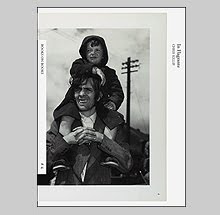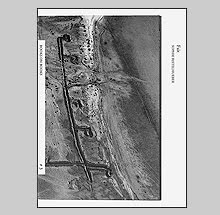Joan Colom and Brassai

Joan Colom and Brassai (Gyula Halasz) have a lot in common. Both started photography after the age of 30. They were fascinated with street life both in the day and at night. Both chose specific areas in which to work. Brassai’s was the 13th arrondissement in Paris. Colom’s the neighborhood of El Raval in Barcelona. Both photographed people in those areas who would be considered marginal. Lastly, both often cropped their images to find more perfect forms.
The Fundacio Foto Colectaniain in Barcelona published a book called Brassai - Paris Colom - Barcelona: Resonancias which compares these two artists and their working methods. The first half is dedicated to Brassai and the second to Colom.
The work of Brassai is, of course, the more well known of the two. The books Paris By Night and The Secret Paris of the 30’s have seen many editions and printings since their first appearance. Brassai had written of this time in his life,
“During my first years in Paris, beginning in 1924, I lived at night…we reveled in the “beauty of sinister things.” Sometimes impelled by an inexplicable desire, I would even enter some dilapidated house, climb to the top of its dark staircase, knock on a door and startle strangers awake, just to find out what unsuspected face Paris might show me from their windows.”
Much of Brassai and his work is common knowledge but what is interesting about Resonancias is that we are shown several of Brassai’s photos as they were exposed on film in full uncropped versions and overlaying the photograph are crop lines specifying how he manipulated the final image.
The book poses that since Brassai was a writer as well as photographer, he was more accepting of his art’s need for revising after the first attempt. Brassai was using the equivalent of a medium format camera mounted on a tripod. The slow film available also meant a need to provide the light (magnesium powder) in order to make proper exposures and freeze his moving subjects. Using these tools, the edges of his photographs were bound to be imprecise and require alterations. Much in the way a writer toils over word choice and grammar in order to create a finer sentence.
Joan Colom, on the other hand, was using a small, unobtrusive 35mm camera to describe what he was witnessing in the streets of El Raval in Barcelona. His need for altering his photographs arose from the fact that often he shot without looking through the viewfinder. Unlike Brassai who was working most often with the cooperation of those he was photographing, Colom wished to go unnoticed, searching for “images that touch me” and remain authentic.
Because of Colom’s way of shooting, his revisions of the images often wind up with varied frame ratios. Some stay close to the 1:1.5 ratio of 35mm and others are wildly cropped into a vertical panoramic shape that narrow our view and focus our attention.
El Raval, was the red light district of Barcelona where he photographed between 1958 to 1961. Colom’s camera weaves through the crowd grabbing at gesture, expression and body language and often narrowing down the information with a sketch-like directness. Whether he is photographing negotiations for sex or picking out faces in the street life, he does so without judgement. He achieves in his description a tone of the barrio that gives a sense of comradeship among its patrons. 
A different book published by Steidl last year called Joan Colom: Raval (French edition is Joan Colom: Les Gens Du Raval) gives us a look at 83 photographs from this body of work. The book is well designed and printed using scans from Colom’s prints instead of negatives. In the reproductions we often see the large grain of the images fall in and out of focus from imprecise enlargements (perhaps something only printers are sensitive to).
When some of this work was published in 1964 as Izas, Rabizas y Colipoterras with writing by Camilio Jose Cela it was met with disapproval from the Franco regime because of the frankness of its subject matter. Partly due to this controversy, Colom put down his camera for twenty years and didn’t return to photography until the 1980’s.
When one thinks of these two artists, Brassai and Colom, it is common to overlook the surrounding cultural environment in which they were working. For Brassai, it was the burgeoning intellectualism of Paris in the 1930’s where he was surrounded by the likes of Henry Miller, Picasso, Mattisse, Giacometti and Jaques Prevert.
For Colom however, it was a Spain repressed and culturally dulled by Francisco Franco.
Book Available Here
Book Available Here (Paperback Edition)











